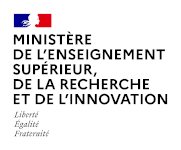The FAIR data Guiding Principles – FOR COMMENT
FAIR data Guiding Principles
For all parties involved in Data Stewardship, the facets of FAIRness, described below, provide incremental guidance regarding how they can benefit from moving toward the ultimate objective of having all concepts referred-to in Data Objects (Meta data or Data Elements themselves) unambiguously resolvable for machines, and thus also for humans.
By adopting all FAIR facets, Data Objects become fully: Findable, Accessible, Interoperable, and Reusable
Definitions
– A Concept is any defined ‘unit of thought’ to which we refer in our digital formats [1]
– A Data Object is defined for the purpose of the principles below as: An Identifiable Data Item with Data elements + Metadata + an Identifier [2]
– When we use the term (Meta) data here, we intend to indicate that the principle is true for Metadata as well as for the actual, collected Data Elements in the Data Object, but that the principle in question can be independently implemented for each of them [3].
FAIR Guiding Principles
1. To be Findable any Data Object should be uniquely and persistently identifiable [4]
1.1. The same Data Object should be re-findable at any point in time, thus Data Objects should be persistent, with emphasis on their metadata, [see JDDCP 4 and JDDCP 6]
1.2. A Data Object should minimally contain basic machine readable metadata that allows it to be distinguished from other Data Objects [see JDDCP 5]
1.3. Identifiers for any concept used in Data Objects should therefore be Unique and Persistent [5 and JDDCP 4 and JDDCP 6]
…






